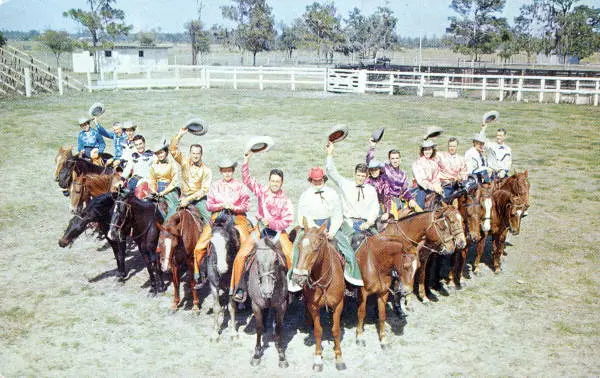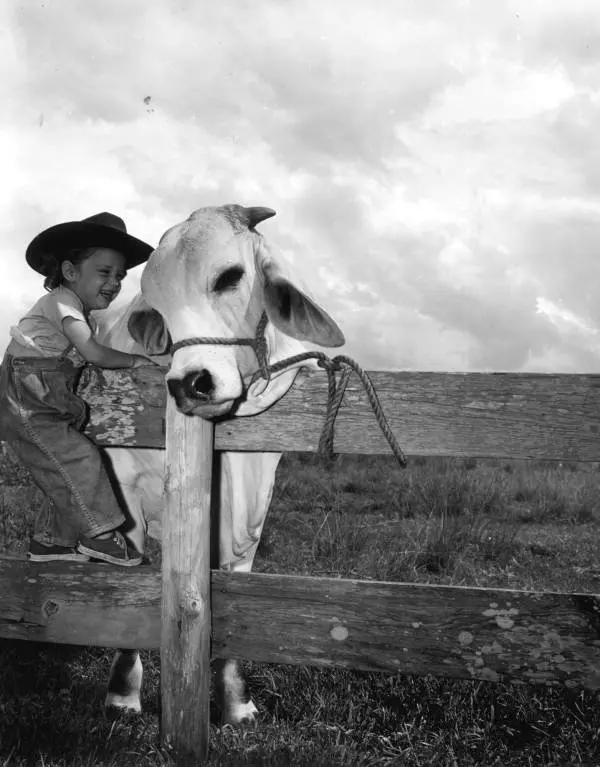Florida Today 20
Florida Frontiers “Florida Cattle”
Ben Brotemarkle
Even where urban sprawl has enveloped large portions of the Florida landscape, Florida cattle are never too far from view. Traveling the major interstates, highways, and particularly rural roads throughout the state, herds of cattle can be seen grazing on even small patches of land. White birds called cattle egrets often stand on or near the cows, eating ticks, flies, and other insects attracted to the large mammals.
Cattle first came to Florida with the Spanish.
After Ponce de Léon gave our state its name in 1513, he returned eight years later to establish a colony in Southwest Florida. The Calusa Indians, known for their colorful ceremonial masks and intricate wood carvings, attacked Ponce and his entourage, repelling the settlement attempt. Ponce later died from wounds he received in the attack.
As he was forced to flee the Calusa, Ponce de Léon abandoned a herd of Andalusian cattle he had brought to help feed his colonists. Those animals are believed to be the first domesticated cattle in North America.
When the Spanish explorer Hernando de Soto came to Southwest Florida in 1539, he also brought herds of cattle with him. As de Soto moved north through the center of the state, many of the cows strayed and were left behind.
Some of the abandoned Spanish cows roamed free, while others were bred and domesticated by Native Americans in Florida.
As pioneer settlers came to Florida in the mid-1800s, establishing a cattle industry here seemed prudent.
During the Civil War, Florida became the primary supplier of beef to the Confederate Army. Jacob Summerlin, known as the “King of the Crackers,” was one of the most successful cattlemen in the state. Many families still active in Florida’s cattle industry can trace their roots back to men who raised cattle during the Civil War, including Jack Yates, Henry Overstreet, George W. Bronson, and Isaac Lanier.
The Central Florida town of Kissimmee was a focal point for the state’s thriving cattle industry even before the war, and it remains so today.
The railroad came to Kissimmee in 1882, expanding cattle exportation. The citrus industry and tourism benefited from the railroad as well. During the late 1800s and early 1900s, steamboat traffic on the Kissimmee River also aided the local cattle industry. In the early twentieth century, Kissimmee cattlemen overcame livestock parasites such as stomach worms and the Texas fever tick.
The Florida ranchers successfully bred the Spanish cow descendants with Brahman, Angus, and Hereford stock.
The Florida Cattlemen’s Association was formed in Kissimmee in 1934. The group addresses cattle industry concerns such as promoting the sale of Florida-grown meat and fighting what they see as adverse legislation.
In 1938, the Kissimmee Livestock Auction Market was established to sell cattle on a weekly basis. An arena was constructed next to the Auction Market, where the first Silver Spurs Rodeo was held in 1944.
It is estimated that about one thousand people attended the first Silver Spurs Rodeo. The modern facility used today seats ten thousand.
The traditions of performing the Quadrille on Horseback and other rodeo skills are passed from one generation to the next in Kissimmee. On “Rodeo Day,” students in Osceola County get the day off from school to allow participation in the event.
The town of Kissimmee is best known today as the next-door-neighbor of Disney World. Highway 192 in Kissimmee is a seemingly endless series of hotels, T-shirt shops, discount malls, and themed restaurants.
Just beyond the neon and chaser lights of Highway 192, the cattle industry is alive and well in this historic community.
The 133rd Silver Spurs Rodeo was held June 6 and 7. The National Barrel Horse Association Florida State Finals are June 19-22 at the Silver Spurs Arena.
For more information on the cattle industry in Florida, past and present, visit the Osceola County Welcome Center and History Museum at 750 N. Bass Road in Kissimmee.
Dr. Ben Brotemarkle is executive director of the Florida Historical Society and host of the radio program “Florida Frontiers." The show can also be heard online at myfloridahistory.org.

